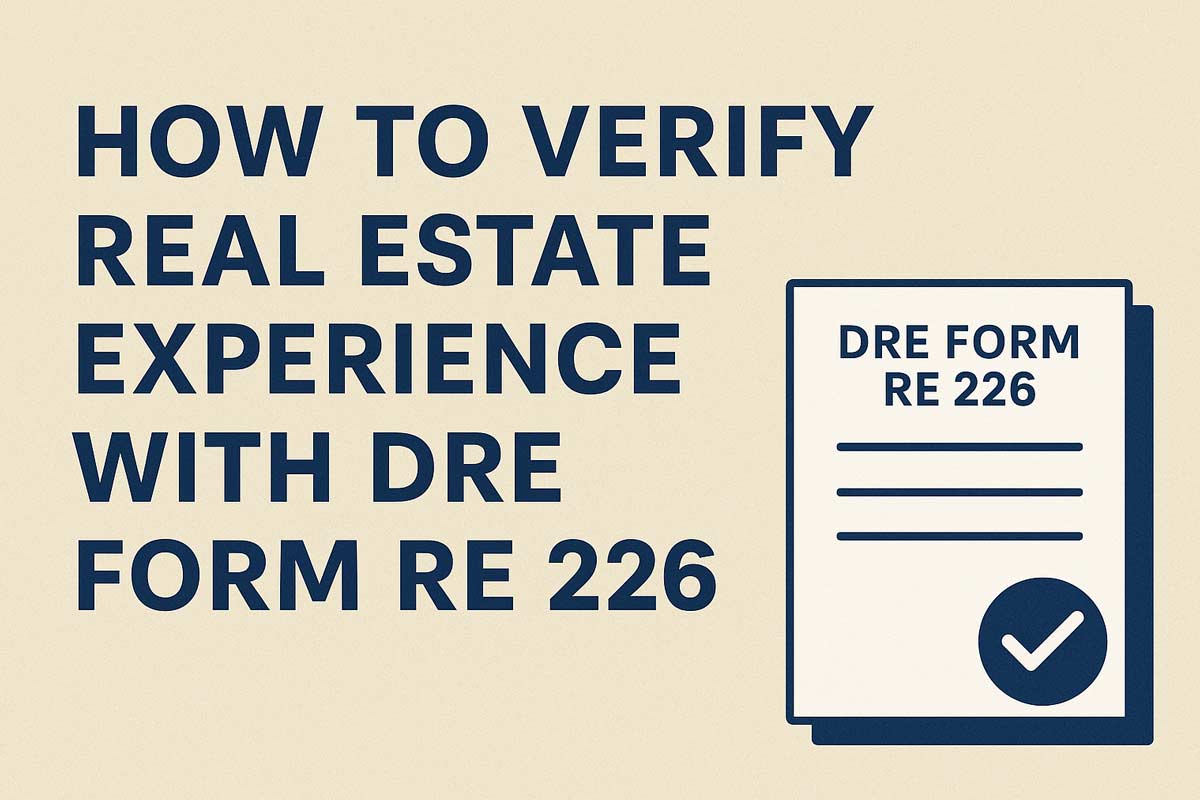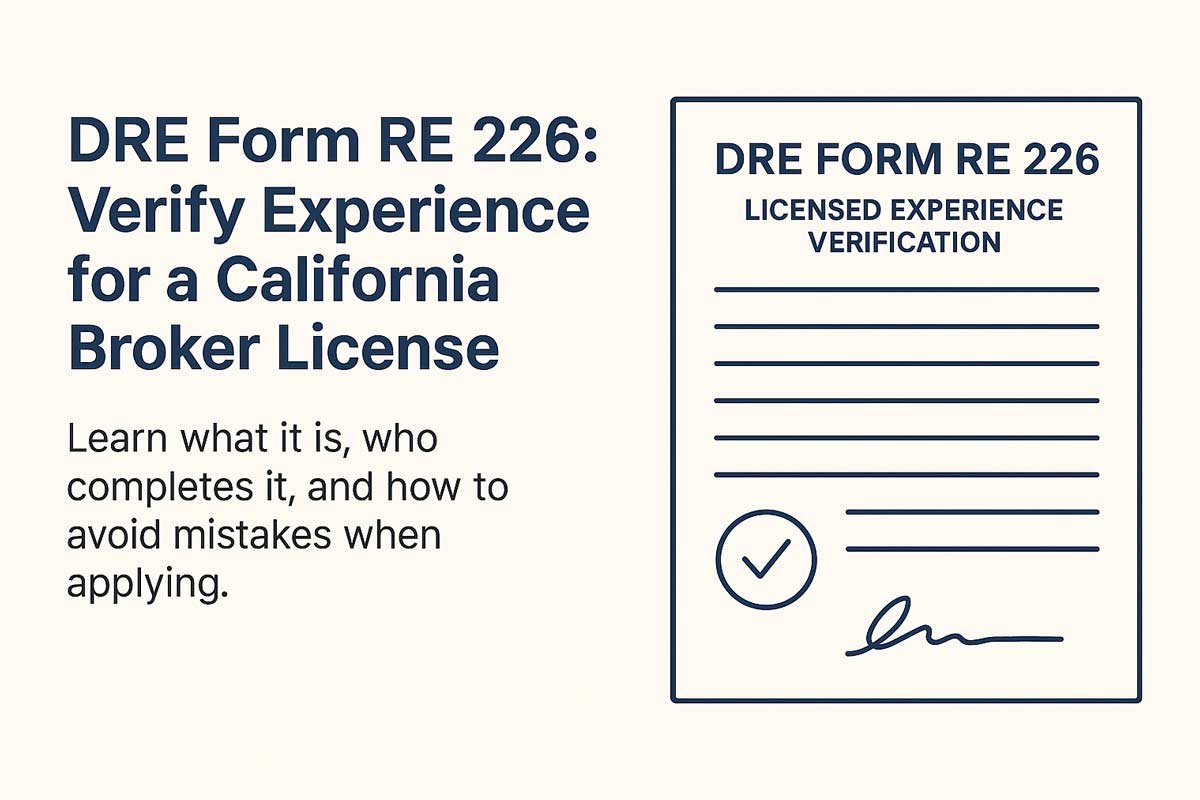
If you’re a California real estate salesperson ready to take the next step and become a broker, you’ll need more than coursework and an exam — you’ll need to prove your experience.
That’s where the RE 226 — Licensed Experience Verification — comes in. It’s one of the most important documents in your broker license application, and completing it correctly can mean the difference between a smooth approval and a DRE delay.
Let’s break it down.
Form RE 226 is the California Department of Real Estate’s official method for confirming that you’ve been licensed — and actually working — long enough to qualify for the broker’s exam.
In plain English, it answers the question:
“Has this person truly gained enough real estate experience to become a broker?”
The form must be completed and signed by your supervising or responsible broker — not by you alone — and submitted with either your Broker Exam Application (RE 400B) or your Combined Exam/License Application (RE 436).
To qualify for the broker exam, you must demonstrate at least two years of full-time licensed salesperson experience within the five years immediately preceding your application.
Here’s what that means:

Your supervising broker certifies your experience by completing several key sections of RE 226, including:
Your broker must sign, date, and include their license number and contact details.
If you’ve worked under multiple brokers, you’ll need a separate RE 226 for each one.
Small errors on RE 226 often cause major delays. Avoid these pitfalls:
If you don’t meet the full two-year salesperson requirement, you may still qualify through equivalent experience in related fields, such as:
In that case, you’ll use Form RE 227 (Equivalent Experience Verification) instead — a similar form tailored for non-salesperson roles.
Start thinking about your RE 226 early. Don’t wait until you’re ready to submit your broker application.
At ADHI Schools, we’ve helped thousands of California agents move from their first real estate class to earning their broker license. We know exactly how to make the paperwork simple.
If you’re ready to make the jump:
Form RE 226 isn’t as intimidating as it looks — it’s simply the DRE’s way of confirming that you’ve put in the work and earned your experience in the field.
Fill it out carefully, coordinate with your broker, and you’ll be one step closer to joining California’s broker ranks.
For more tips and step-by-step licensing guidance, visit ADHISchools.com — your trusted partner from first class to broker license.
California Real Estate License Delays: How to Pass DRE Education Verification Fast
Holiday Home Sales: A Hidden Opportunity for Agents
What Happens When the DRE Denies Your License (and How to Fight Back)
Out-of-State Agents: Transferring a Real Estate License to California
AB 1033, Explained for California Agents: How Separate-Sale ADUs Actually Work

Founder, Adhi Schools
Kartik Subramaniam is the Founder and CEO of ADHI Real Estate Schools, a leader in real estate education throughout California. Holding a degree from Cal Poly University, Subramaniam brings a wealth of experience in real estate sales, property management, and investment transactions. He is the author of nine books on real estate and countless real estate articles. With a track record of successfully completing hundreds of real estate transactions, he has equipped countless professionals to thrive in the industry.